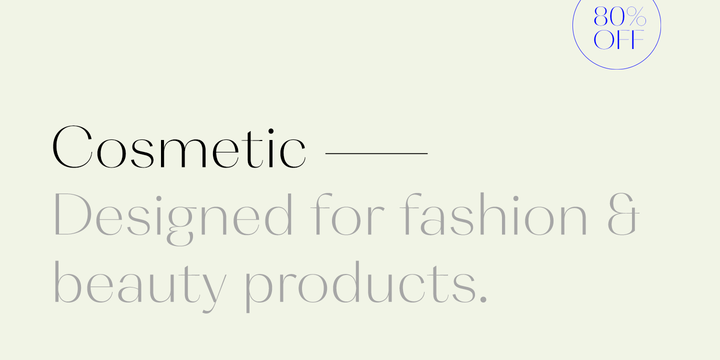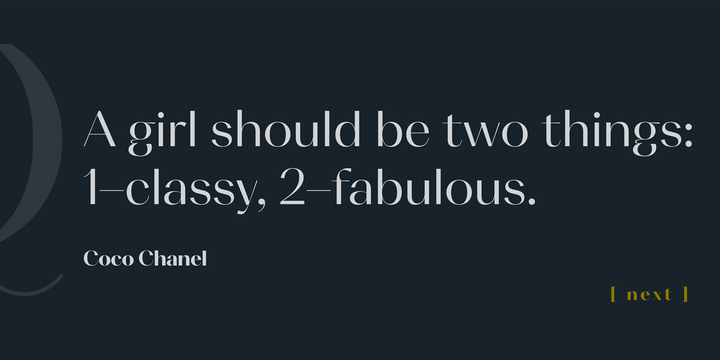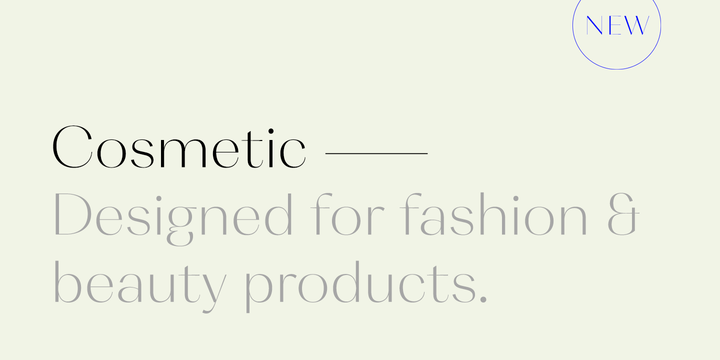
Cosmetic is a very high-contrast family of sans serif fonts. As its name implies, it has been developed for exquisite applications, like the corporate identity of fashion or beauty product firms, or for cosmetic product packaging design. For centuries, the fashion world has looked to France for inspiration. Cosmetic does not disappoint; it is a ‘French’ typeface, designed by Jean-Baptiste Morizot. Aside from its general elegance, the most gallic part of Cosmetic is its lowercase ‘g’, whose form calls back to some early 19th century Didot typefaces. Each font includes a more standard-looking ‘g’ as a stylistic alternate, as well as a narrower ‘f’ that may be automatically substituted into the text via a Contextual Alternates OpenType feature, to help it avoid colliding with certain letters that might follow it. Cosmetic’s letterforms appear slightly extended when compared with many other typefaces. This gives the typeface’s details the room they need to shine. The family includes five weights, ranging from a quite delicate Thin to a Bold whose heavy, thick strokes elegantly paint a strong contrast with the letters’ thins.

